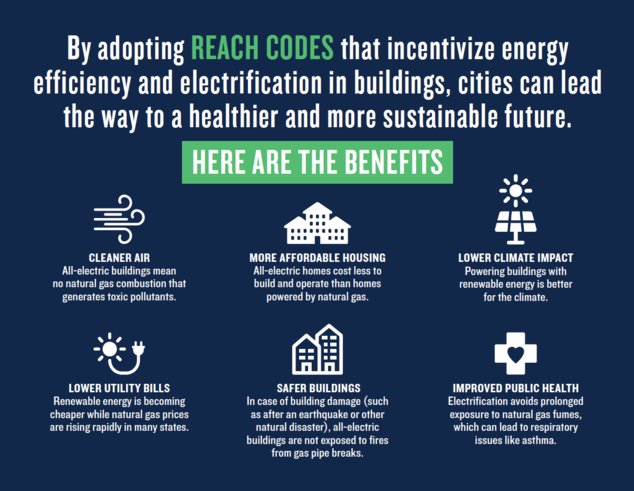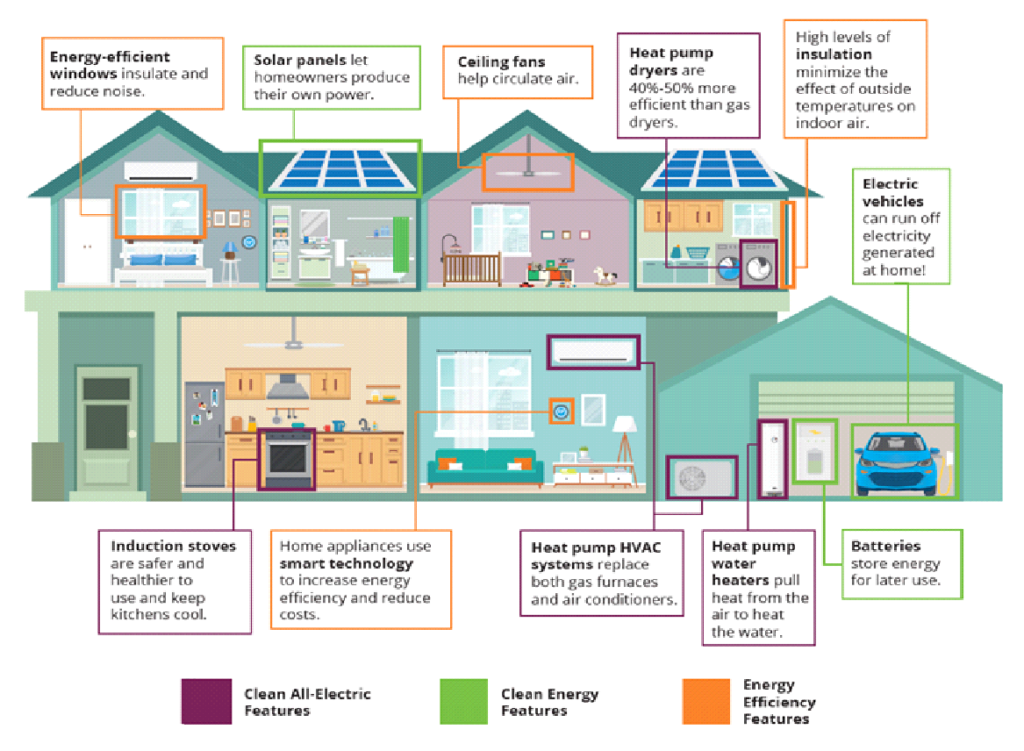October 31, 2019
Topic
The road to sustainability now includes important electrification efforts as cities are using building codes to reduce natural gas demand. Since California’s electricity supply is so much cleaner thanks to solar, it makes economic sense to use electric technologies inside homes instead of fossil fuels. The City of Santa Monica brought electrification into the mainstream when it recently took formal steps to reduce greenhouse gas emissions (GHGs) by requiring builders to use less natural gas. Other cities are taking similar actions using practical and proven Reach Code ordinances. A Reach Code is a local building energy code that goes beyond or “reaches” past the state minimum requirements for energy use in building design and construction, usually to address issues such as GHG emissions targets, air quality and public health and safety (inside and outside of buildings).

Readily available electric technologies like induction stoves, heat pump hot water heaters and heat pump heating, ventilation and air conditioning (HVAC) units are the technologies of choice for the future. Analysis by the Statewide Codes and Standards Program (comprised of the California investor owned utilities) finds that all-electric homes are cheaper to build and cost less to operate over time than mixed-fuel buildings. Their research also found that for single family homes, electrification saved 30% – 60% GHG emissions relative to mixed fuel (gas and electric) homes. As the carbon intensity of the electric grid decreases over time with cleaner energy, these savings are estimated to increase to 80% – 90%, which has cities excited about electric homes.
“Electric-ready ordinances can be an important tool for local governments getting ready for more electrification and further reducing greenhouse gas emissions. It gives the consumer more choices, without mandating anything. You can accumulate large economic savings with electric-ready pre-wiring during new construction.”
-Ruben Barrera, Chief Building Official, County of Ventura
Cities are considering three primary routes to residential building electrification:
- “All-Electric” Reach Codes are the most cost-effective and comprehensive option requiring that all building appliances and heating, ventilation and air conditioning (HVAC) equipment be electric-powered. This option saves the most GHG emissions.
- “Electric-Preferred” Reach Codes favor the construction of all-electric buildings by requiring that electric buildings meet minimum state code. However, if natural gas appliances are also used the building must meet more stringent efficiency standards.
- Electric-Ready (Fuel-Neutral) ordinances still allow for dual-fuel construction but provides for a more “staggered” approach to building electrification. New homes can be equipped with natural gas, but also require that roughly $800 in electric infrastructure be installed to “ready the building” for future electric appliances and vehicles. Importantly, unlike the other two routes this option does not require review and approval by the California Energy Commission (CEC).
Southern California Edison has supported electrification of the building and transportation sectors in its Pathway 2045, a roadmap for decarbonizing the electric grid and offers ongoing information and assistance to cities, builders and homeowners that want to be an integral part of reducing emissions.





